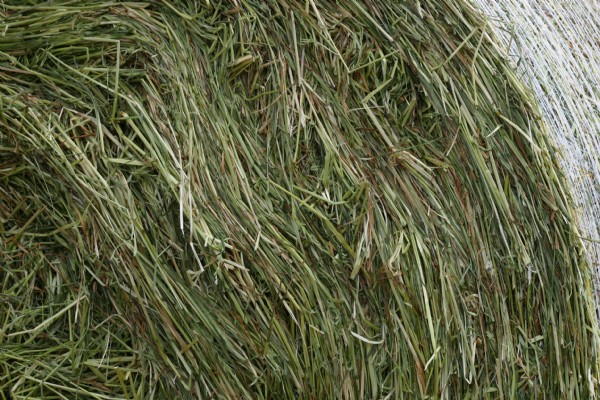

Making good hay is both an art and a science, as well as being weather-dependent.
Starting out with the right seed is certainly a step in the right direction.
Hay Options
The right seed mixtures for hay will depend on which type of stock you are going to be feeding.
Horse hay is best produced using Italian ryegrass with a two year duration. Some specialists even prefer to grow a new ley every year. This will give maximum yield of very clean material and can be a very profitable crop. Horses prefer 'hard' hay which is different to 'meadow hay' suitable for other stock. Our mixture contains three sorts of Italian ryegrass. This gives more resistance to diseases which can occasionally be a problem with individual varieties.
Once established, a sowing of Italian ryegrass usually produces two cuts of hay a year. After sowing in September the first hay crop can be cut in June. However a spring-sown crop of Italian ryegrass will not produce hay in the same year as it needs to go through a winter before it produces the stemmy growth suitable for hay making. When it is necessary to sow in the spring, for example after an autumn failure, then westerwolds (annual) ryegrass should be chosen. This can produce hay by late June.
Hay may also be made from permanent pasture and, although may be relatively low yielding, can still offer valuable, mineral/vitamin rich winter forage.
The amount of nitrogen fertiliser should be restricted to 70 kg N per hectare otherwise a hay crop can be too 'lush' and difficult to dry.
Making horse hay
Hay making is very dependent on the weather. It is therefore a matter of timing as to when you cut. The local weather forecast must be used to predict a period with 3 -4 days of dry, preferably sunny weather. If a large acreage is to be cut it may be safer to take one field at a time.
After cutting the crop should be left in the swath for one or two days and then turning should start using a “hay-bob” type machine, or tedder. The crop should then be rowed up using a hay rake, combining two swaths into one before bailing up. It is essential for the hay to be dry at this stage otherwise it may become mouldy in storage. Mouldy hay is unsuitable for horses which are prone to lung infections.
For poor weather conditions it may become necessary to make “haylage”. This means preserving the forage at a stage between hay and silage. Haylage is around 50% misture content and the option to make this gives greater flexibility as it is less weather dependent.
Lucerne, or alfalfa, is another very good option for high quality horse hay.
Hay for sheep and cattle
The best mixtures for hay are usually longer term ones such as Early Bite Sheep and Hay Ley and Milk-Meat Cut or Graze which contain perennial and hybrid ryegrasses. The heading (or seed setting) dates in our mixtures are medium or late as the early-heading grasses do not allow time for the crop to bulk up.
On heavier land timothy grass can also be included as it is very good for cutting as hay and is very palatable to animals. Meadow fescue based mixtures, whilst slower to establish from seed than ryegrass ones, are the traditional hay crops in many districts and are often sown with timothy and clovers. Clovers can also benefit hay mixtures. Whilst much of the clover leaf can be lost during drying, their stems contain high amounts of protein and are very useful for fattening animals. Other legumes can provide good protein-rich hay. Sainfoin and lucerne are excellent for growing on dry ground and, with their really deep roots, can often yield more than grass leys.
The time of cutting for hay is dictated by the heading date of the crop. The usual time is to cut is when the majority of grasses have just headed. This gives the optimum balance of yield and quality and is a little later than when cutting for silage.
Grazing can be carried out on hay fields in the spring, up to about the middle of April when the crop should be shut up. The effect of grazing is to thicken up the crop, essential with Italian ryegrass type leys.
Long term grazing leys are also suitable for making hay. The cutting date will usually be later but a good leafy meadow hay can be produced in July-August. Later cutting is especially advantageous to protect wild life, especially nesting birds.
Fertilisers
Nitrogen applications for grass-based hay leys should not be excessive as this causes a sappy material which is more difficult to dry. Do not apply more than 60 -70 kg per hectare. If cut every year then the potash levels are equally important as every cut takes out vital nutrients. Any deficiencies must be corrected or yields will diminish over time.
Date Posted: 29th March 2017



